This is an index of the 61 artists covered in this series to 9 July 2015. A total of 38 entries are given with an example painting, a short summary, and link to the article in which their career and work is detailed. A further 23 entries are shorter, and link to the article in which each is covered in brief.
Giuseppe Abbati (1836-1868), Italy, Macchiaioli. Article
Anna Kirstine Ancher (née Brøndum) (1859-1935), Denmark, Realist and Impressionist. Her skills as a colourist and impressionist shone through in her solo works, as she progressed from realism after 1890 and became increasingly painterly in her brushstrokes. She was also influenced by Degas’ use of unusual angles and cropping, possibly reflecting some of the contemporary trends in photography. Article

Cristiano Banti (1824-1904), Italy, Macchiaioli. Article
Asai Chū (1856-1907), Japan, Barbizon School and Impressionist. He was initially taught to paint in the style of the Barbizon School, but became impressionist when in Paris in the early years of the twentieth century. He prepared the ground for Kuroda, and had he lived longer he should have had even greater impact on Japanese painting. Article

Carl (Karl) Eduard Ferdinand Blechen (1798-1840), Germany, Pre-Impressionist. His copious plein air studies were seen as being radically different, and invite comparison with the more experimental works of JMW Turner, for instance. One late work anticipates many elements of Impressionism. Article

Giovanni Boldini (1842-1931), Italy, Macchiaioli. Apart from his early years as a somewhat atypical member of the Macchiaioli, he remained on the periphery of those other movements and kept his distinctive style as the Master of Swish. Article
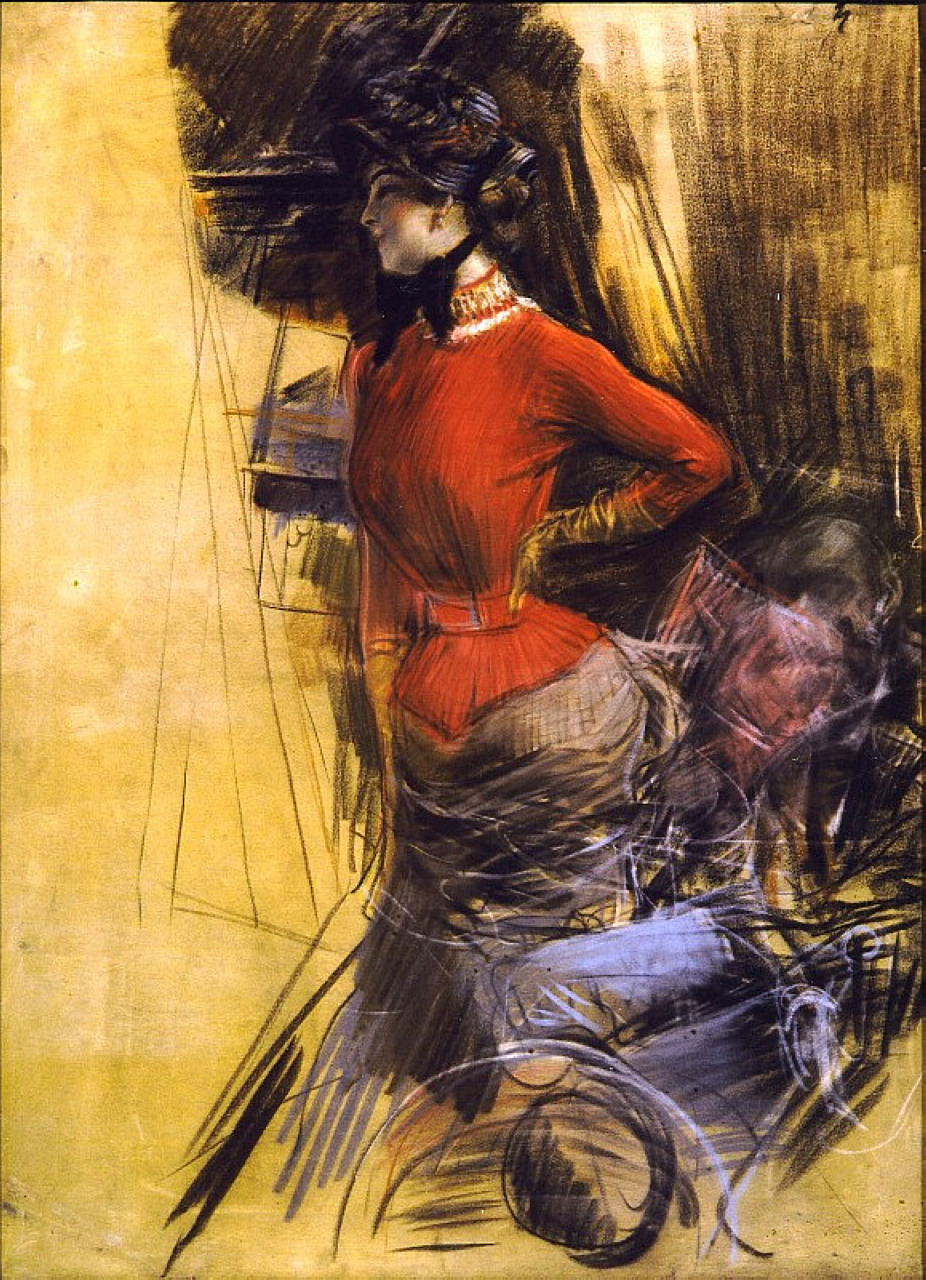
Odoardo Borrani (1833-1905), Italy, Macchiaioli. Article
Vincenzo Cabianca (1827-1902), Italy, Macchiaioli. Article
Adriano Cecioni (1836-1886), Italy, Macchiaioli. Article
Hugo Charlemont (1850-1939), Austria, Impressionist. Article
William Merritt Chase (1849-1916), USA, Impressionist. He became an unabashed Impressionist during his long training in Europe, and from about 1880 onwards most of his paintings are characterised by loose brushwork and other characteristics of full Impressionist style. Although he initially concentrated on portraiture, his many summers in the Shinnecock Hills provided perfect conditions for him to paint superb plein air landscapes. He was without doubt a leading American Impressionist, and a great painter by any standards. Article

Fanny Maria Churberg (1845-1892), Finland, Realist and Impressionist. Her early work was strictly realist, but she soon started to use higher chroma colours and to express more transient effects of light. Her brushwork then became progressively looser and more painterly as a result of the influence of Courbet’s work, but she stopped painting in 1880 to devote her time to crafts. Article

Émile Claus (1849-1924), Belgium, Realist and Impressionist. Prior to 1890, he was a successful realist painters of rural scenes. The influence of the Impressionists led him to his distinctive ‘luminism’ and eventually, whilst in exile in London, to his own variant of impressionism. Article

Charles Conder (1868-1909), Australia, Realist and Impressionist. His reputation as a modern Master was soon lost as modernism swept the world after the First World War, and being largely unrepresented in public collections outside Australia, his sometimes overtly impressionist style has been forgotten. Although some of his paintings were sharply realist, he also painted some of the loosest and most impressionist works of the Heidelberg School or Australian Impressionists. Article

Lovis Corinth (Franz Heinrich Louis) (1858-1925), Germany, Impressionist, Expressionist. He moved to Berlin in 1900, opening a painting academy in 1902. His brushwork progressively loosened, his colours became brighter, and he started to capture more light in his paintings. In his later career he was an avid print-maker and painted many landscapes in the Bavarian Alps. His style then moved slowly from impressionist to expressionist. Article

Nino (Giovanni) Costa (1826-1903), Italy, Macchiaioli. Article
Vito d’Ancona (1825-1884), Italy, Macchiaioli. Article
Serafino de Tivoli (1826-1892), Italy, Macchiaioli. Article
Albert Gustaf Aristides Edelfelt (1854-1905), Finland, Realist and Impressionist. Initially a strict realist, it is as a realist that he is best known today. However his landscapes and some of his less formal portraits became progressively more loose and less realist. During the 1890s his paintings appear quite impressionist, rich in colour and light, although he generally left finer brushmarks. Article

Giovanni Fattori (1825-1908), Italy, Macchiaioli. The only painter covered here who adhered to the group’s principles throughout his career. Article

Akseli Gallen-Kallela (Axél Waldemar Gallén) (1865-1931), Finland, Realist, Impressionist, Symbolist, Expressionist. His impressionist style occupied less than a decade, but was long enough for him to leave several gently and delightfully worked paintings which beg the question as to what he might have achieved had he not changed styles so quickly. Article

Nicolae Grigorescu (1838-1907), Romania, Impressionist. Widely regarded as the founding father of modern Romanian art, his style progressively evolved from that of Millet and the Barbizon School, to show visible brushstrokes, patches of colour, and other signs of Impressionism, putting him in its vanguard. Article

Nazmi Ziya Güran (1881-1937), Turkey, Impressionist. Article
Frederick Childe Hassam (1859-1935), USA, Impressionist. Often claimed to be the greatest of the American Impressionists, with several thousand paintings to his name he was certainly among the most prolific. After a brief initial period of realism, he was as intensely Impressionist in his style as any of the French Impressionists, and in the twentieth century developed unique responses to the modernist trend. He clung to Impressionism to the end, and as a result is one of the leading American Impressionists. Article

Winslow Homer (1836-1910), USA, Realist, impressionist tendencies. He never aspired to be an impressionist, but painted many works plein air, with loose brushwork, and conveying impressions. As such, from about 1873 until he went to Cullercoats in 1881, he had an impressionist style, and established himself as America’s foremost watercolour painter. Article

George Inness (1825-94), USA, Realist, Barbizon, Impressionist. Whatever he maintained about the ordered nature of his paintings, the evidence is that he progressed from realism through Barbizon to full impressionist style, at least in his facture. And he remains one of the greatest American landscape painters. Article

Johan Barthold Jongkind (1819-1891), The Netherlands, Impressionist. He anticipated the Impressionist style well in advance of the core and leaders of the Impressionist movement. Many of its innovations – plein air paintings which appeared sketchy and impromptu, abundance of light and rich colour, unfinished appearance, visible brushstrokes – were first developed and brought together by him. Article

Kume Keiichirō (1866-1934), Japan, Impressionist. Article
Viscount Kuroda Seiki (Kuroda Kiyoteru) (1866-1924), Japan, Impressionist. He was trained to paint in impressionist style, and did so throughout his career. He was probably one of the founding fathers of the Western painting tradition in Japan, thus an artist of singular importance in its culture. He was also widely acclaimed in his day as a painter of significance in Europe. Article

Peder Severin Krøyer (1851-1909), Denmark, Realist and Impressionist. A precocious artist, he completed studies at the Royal Danish Academy of Art in 1870, at the age of just 19. From 1877 he travelled widely in Europe, studying under Léon Bonnat in Paris and seeing Impressionist paintings there. He returned to Denmark in 1882, and spent his first summer in Skagen, concentrating on painting fishing and marine motifs. Article

Silvestro Lega (1826-1895), Italy, Macchiaioli. Article
Max Liebermann (1847-1935), Germany, Impressionist. His early work shows strong influence by Millet, but after 1884 he shows progressive development of an Impressionist style, which he retained for the rest of his life. Article

Laura Adeline Muntz (Lyall) (1860-1930), Canada, Impressionist. Article
Martín Malharro (1865-1911), Argentina, Impressionist. Article
Diego Martelli (1839-1896), Italy, Macchiaioli. Article
Roderic O’Conor (1860-1940), Ireland, Impressionist and Post-Impressionist. Article
Nadežda Petrović (1873-1915), Serbia, Impressionist. Article
Ignacio Pinazo Camarlench (1849-1916), Spain, Realist and Impressionist. He was influenced first by the Macchiaioli and then by Impressionism, and from 1874 adopted a looser, impressionist style. He also abandoned his previous history subjects, and concentrated on family scenes, female nudes, and everyday life. Article

Władysław Podkowiński (1866-1895), Poland, Impressionist. Article
Antonio Puccinelli (1822-1897), Italy, Macchiaioli. Article
Ilya Yefimovich Repin (1844-1930), Russia and The Ukraine, Realist and Impressionist. With his thriving portraiture work and many other commissions, Repin certainly showed some quite strong impressionist style in various of his more personal works, but remained at heart a realist, although perhaps not as strict as others such as Isaak Levitan. Article

Tom (Thomas William) Roberts (1856-1931), Australia, Realist and Impressionist. He was at heart a realist whose paintings were often rich in light and colour, but whose croqueton oil sketches were much looser and in impressionist style. The dearth of his works in public collections outside Australia has resulted in him being almost unknown, despite the key role that he played in the development of Australian art. Article

Theodore Robinson (1852-1896), USA, Realist and Impressionist. From his early work in the latter 1880s until his death just a decade later, Robinson was a true Impressionist, and after Monet one of the greatest painters of the area around Giverny. It is a tragedy that his career ended so early. Article

Théo van Rysselberghe (1862-1926), Belgium, Impressionist, Neo-Impressionist, and more. From his first influence by Impressionism, van Rysselberghe explored a world of vivid light and colour, painting some of the most distinctive works of the late nineteenth and early twentieth centuries. He was central to Neo-Impressionism, and one of its most prolific and enduring devotees. At the start of the new century he played a formative role in the development of modernism in the Midi. Article

John Singer Sargent (1856-1925), USA, Realist and Impressionist (perhaps!). Whether Sargent was ever a true Impressionist will remain a matter of debate. Like others, his commercial portraits retained sufficient realism to please the clients. It was in his uncommissioned work, particularly informal paintings of his friends at leisure and his travel landscapes, that his brushstrokes were at their loosest and most expressive, and his capture of the effects of light, and of rich colour, was most prominent. I think that they were truly impressionist, albeit in his own unique way. Article
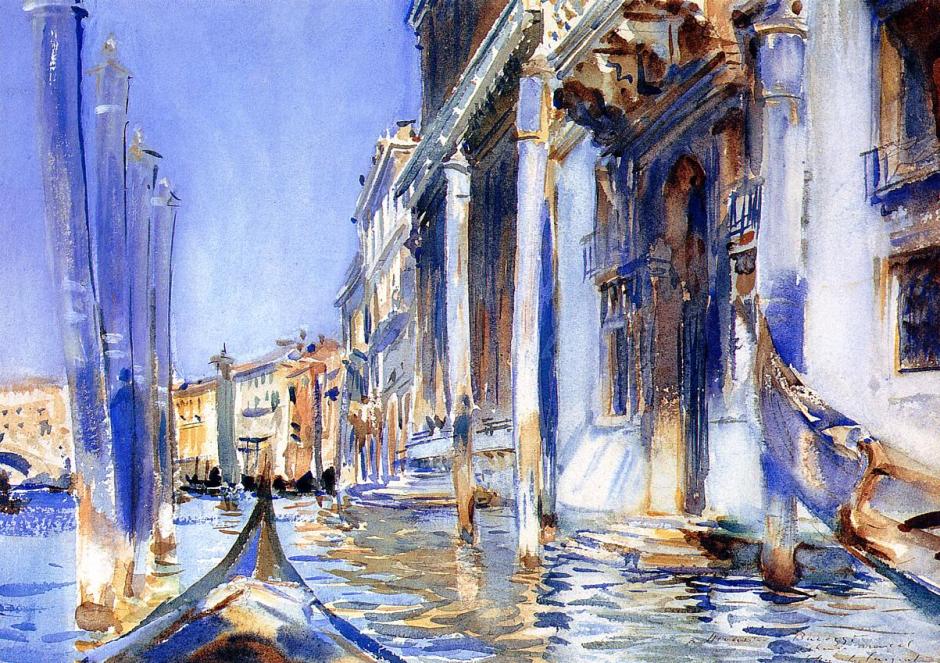
Raffaello Sernesi (1838-1866), Italy, Macchiaioli. Article
Valentin Alexandrovich Serov (1865-1911), Russia, Realist and Impressionist. He was probably the most overt and sustained impressionist in Russia, and although his later works may have moved on to more modernist styles, they retained the high chroma and loose brushstrokes which he had developed back in the late 1870s. His Girl with Peaches (1887) is often regarded as the first work of Russian Impressionism. Article

Telemaco Signorini (1835-1901), Italy, Macchiaioli. Article
Max Slevogt (1868-1932), Germany, Impressionist. He concentrated more on colour and light in landscapes from 1905 onwards, and from 1909 was further influenced by the landscapes of Sisley and Monet. Article

Joaquín Sorolla y Bastida (1863-1923), Spain, Impressionist. He was a very rapid and physical worker, often attacking huge canvases with large and very long brushes plein air. His paintings of the seaside are both distinctive and some of the greatest essays on light ever completed. He is not just a painter’s painter, but deserves recognition as a true modern Master. Article

Philip Wilson Steer (1860-1942), Great Britain, Impressionist and others. His earlier paintings were strongly influenced by the Impressionists, and even ventured into bursts of Divisionism at times. However his style changed repeatedly, and neither he nor other British painters of the day showed any more sustained development of impressionist style. Article
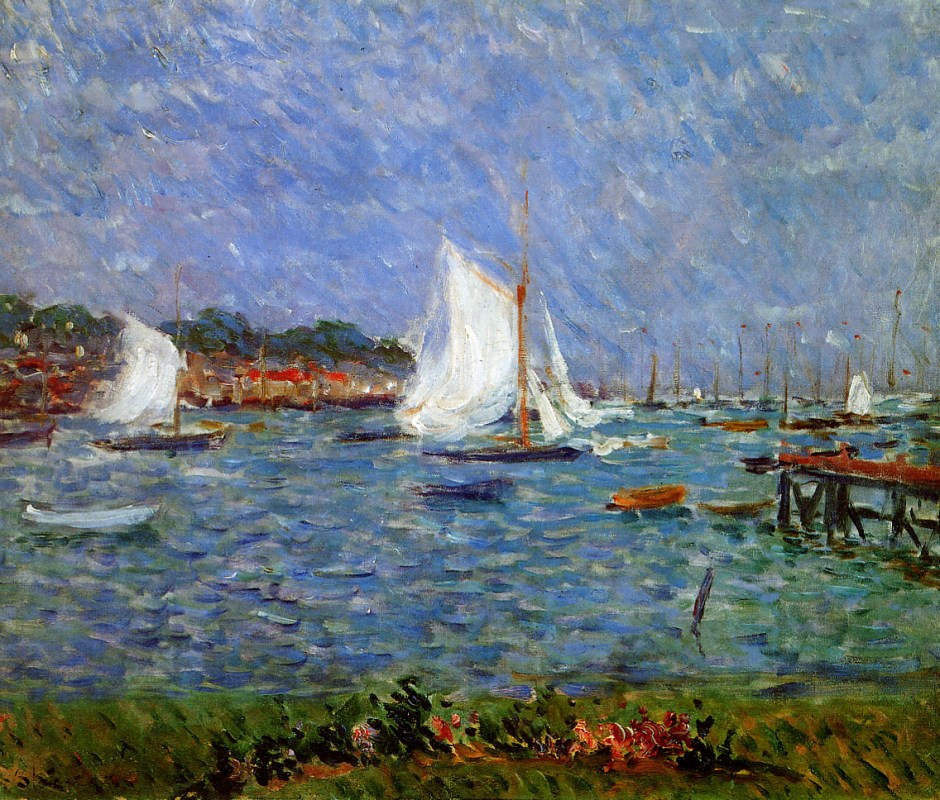
Sir Arthur Ernest (‘Smike’) Streeton (1867-1943), Australia, Realist and Impressionist. Another realist at heart, his brushstrokes were very loose and fine detail more sketchy in plein air paintings throughout his long career. Combined with his portrayal of light, this makes those works appear quite impressionist in style, although he does not appear to have embraced high French Impressionism. Article

Frits Thaulow (1847-1906), Norway, Impressionist. Article
Laurits Regner Tuxen (1853-1927), Denmark, Realist and Impressionist. He first visited Skagen in 1870, and returned on many subsequent summers. He also travelled widely through Europe painting commissioned portraits, including those of royal families such as Christian IX of Denmark, Queen Victoria, and Czar Nicholas II. In 1875 he went to Paris to study under Léon Bonnat. Article

John Henry Twachtman (1853-1902), USA, Realist and Impressionist. Once he had moved to Connecticut in 1886, Twachtman was perhaps the most floridly impressionist of the American Impressionists, with very loose brushwork and colours which were often intense. It is tragic that he should have died so young. Article
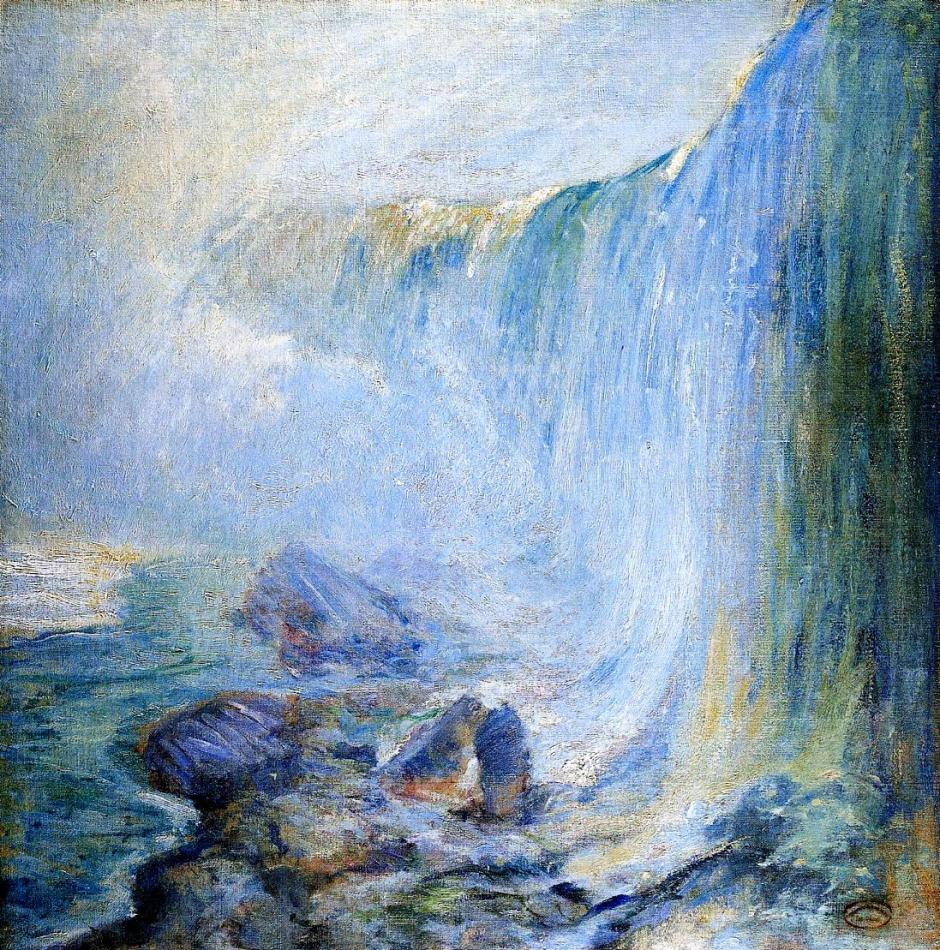
Eliseu (Eliseo d’Angelo) Visconti (1866-1944), Brazil, Impressionist. Article
Guillaume Vogels (1836-1896), Belgium, Impressionist. Whilst the French Impressionists of the day may only have started painting when the sun came out, it was when the sun went in (or down) that Vogels came into his own. He could justly be claimed as an uncle to Expressionism and Surrealism, perhaps even as far as the unsettling paintings of Paul Delvaux. Article

Julian Alden Weir (1852-1919), USA, Realist and Impressionist. His style changed constantly through his working life. For the final decade of the nineteenth century he was an American Impressionist, and even after 1900 he maintained wonderfully loose brushwork. Article

James Abbott McNeill Whistler (1834-1903), USA, pre-Impressionist. He developed a unique style which had much in common with the Impressionists. Before they had emerged from Barbizon or realist styles, he was using very loose brushwork and a facture similar to that used by Impressionists much later. However he never made the same use of bright colours, and few of his paintings are as rich with light. He was strongly influenced by orientalism or japonisme, as later became popular among the French Impressionists. Article
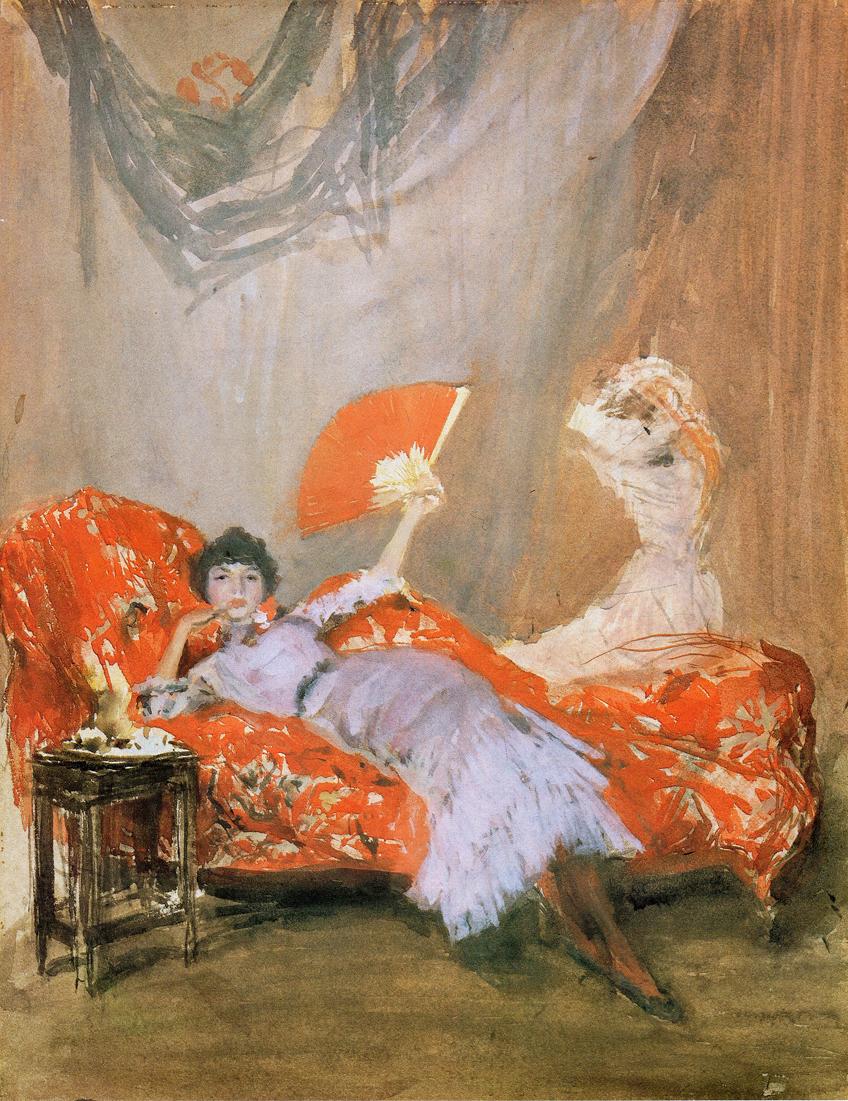
Federico Zandomeneghi (1841-1917), Italy, Macchiaioli. Switched to Impressionism in 1874; following that his richly colourful paintings of women are reminiscent of Renoir at his best, and some of his later studies of nudes appear to owe much to the influence of Degas. Article
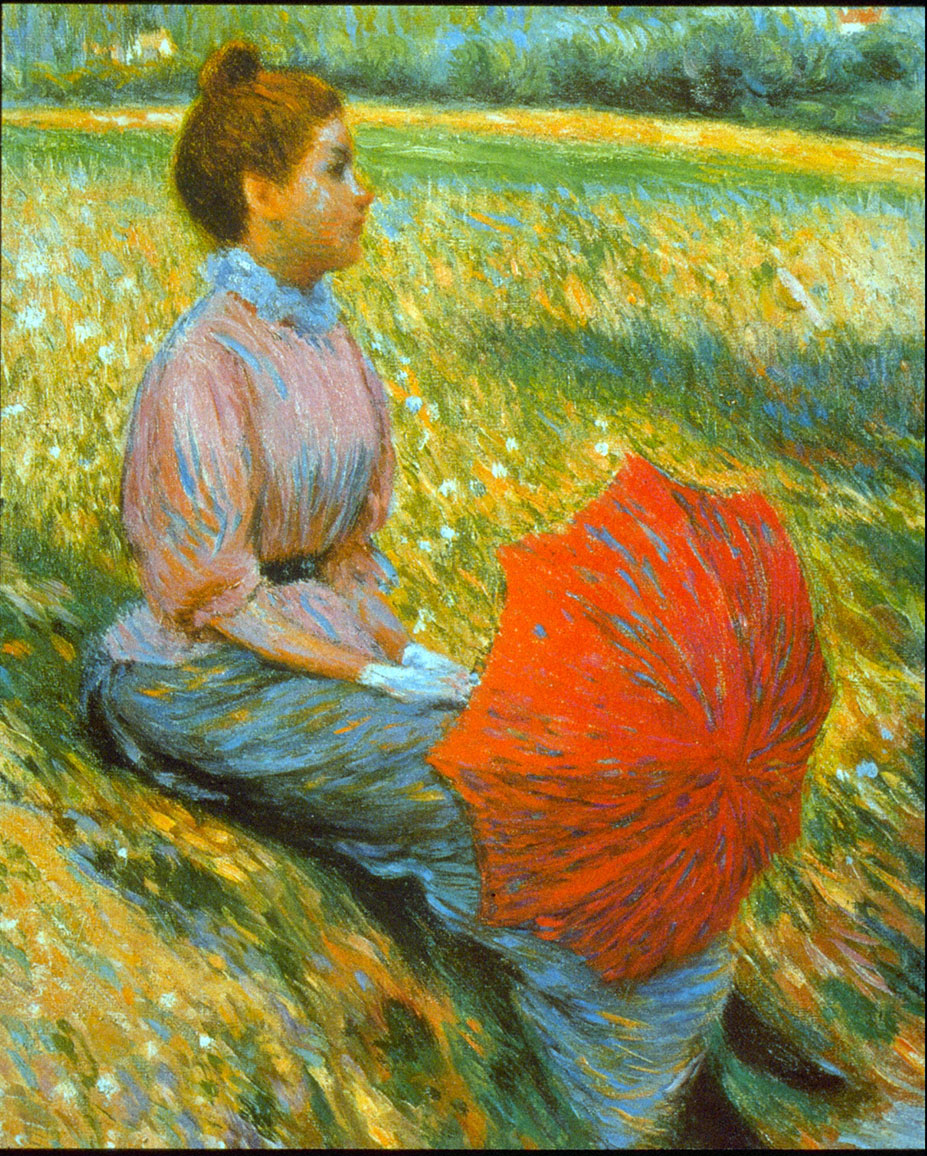
Anders Leonard Zorn (1860-1920), Sweden, Realist and Impressionist. Although today perhaps more widely known for his buxom country-girl nudes, he is a painter’s painter: every brushstroke is placed perfectly, his edges carefully unsharpened where needed to focus the painting perfectly, each painting perfectly composed, lit and coloured. At the height of his career he was gloriously impressionist, in his own unique style. Article
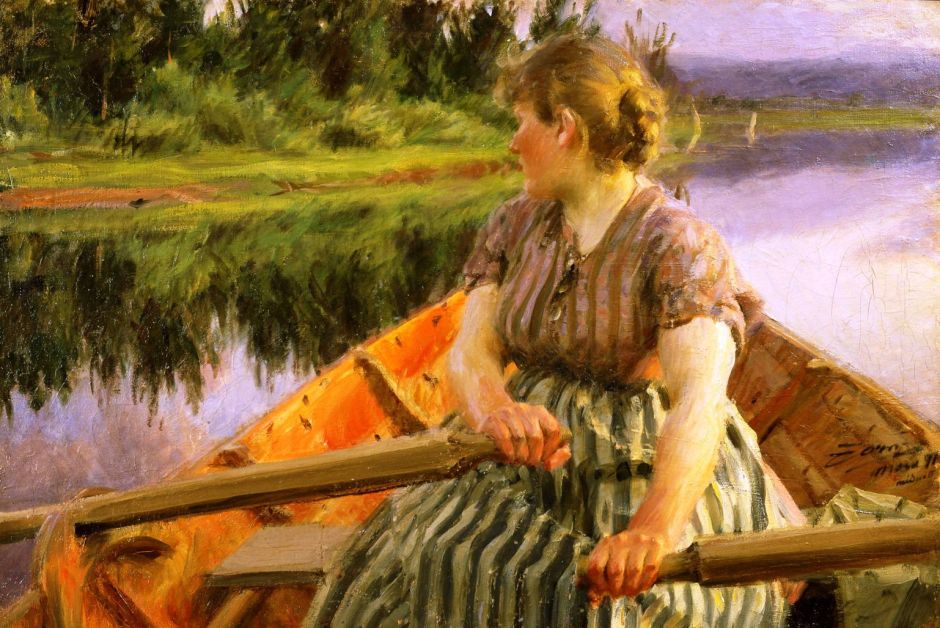
General references
Broude N ed. (1990) World Impressionism: The International Movement, 1860-1920, Abradale Press, Harry N Abrams. ISBN 0 8109 8115 7. (A pioneering survey of impressionism around the world, now long out of print but sometimes available secondhand.)
Walther IF ed. (1993/2013) Impressionism 1860-1920, Part 2, Impressionism in Europe and North America, Taschen. ISBN 978 3 836 54893 9. (Originally published in two parts, this updated survey includes many artists and works omitted by Broude, and is now available in a convenient single volume.)

